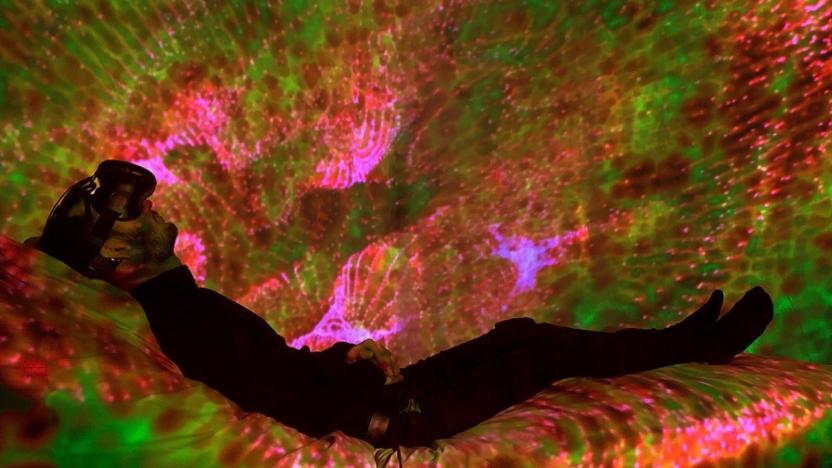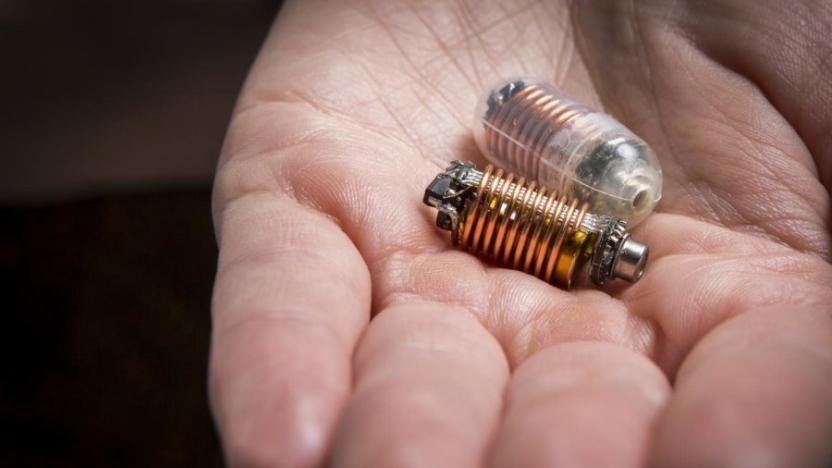rmit
Latest

Brain-controlled VR lightshows could lull you to sleep
By most accounts, technology wreaks havoc on our sleep. Even tools meant to help us sleep better can make insomnia worse. But sleep and tech don't have to be mutually exclusive. Artists and researchers from Royal Melbourne Institute of Technology (RMIT) University have created a virtual reality tool to induce sleep. The device, Inter-Dream, combines ambient music controlled by artists with kaleidoscopic visuals controlled by the user's brainwaves, via EEG.

Ingestible gut sensors reveal potential new immune system
Ingestible technology -- the stalwart theme of medical sci-fi -- has been in the works for decades, but now researchers are closer than ever before to taking it mainstream thanks to successful trials of gas-sensing capsules. The swallowable sensors, designed by RMIT University in Australia, could revolutionize the way gut disorders and diseases are diagnosed and treated, offering a potential game-changer for the one-in-five people worldwide who will suffer from gastrointestinal problems in their lifetimes.

10-micron-wide flowers can bloom just like the real thing
A team of researchers from the RMIT-Indian Institute of Chemical Technology Research Centre has developed a technique to create 10-micron-wide flower-like structures that bloom like the real thing. The group mixed two ingredients in water to make that happen: NDI-bearing phosphonic acid and melamine. As the water evaporates, the components undergo a chemical reaction that resembles a flower blooming. It takes three hours for the combination to fully form, which you can see below the fold. Note that each "flower" is so small, the researchers say you can fit ten along the width of a single human hair strand.

Nano-sized earthquakes could boost phone cameras' performance
A team of Royal Melbourne Institute of Technology (RMIT) researchers believe they've found the secret to better phone cameras: teeny, tiny nano-earthquakes. To be exact, they've discovered that controlled sound waves can send ripples across 2D materials (flat surfaces that are a few atomic layers thick such as graphene), similar to ripples on the surface of water. These ripples can apparently change the electronic properties of a substance by carrying electrons across it. For their experiment, the team tested the technique on a photoluminescent 2D material, which emitted more and more light as the nano-earthquake intensified.

Researchers take a hint from birds to fight airplane turbulence
We've all been there: you're trying to catch a little shut-eye on a flight when boom, out of nowhere, the plane hits a rough patch and you're dramatically roused from your slumber. Thanks to researchers at RMIT University in Melbourne, Australia, those rude awakenings just might become a thing of the past. Inspired by the way birds detect and adjust to shifts in wind and airflow using their feathers, the school's Unmanned Systems Research team cooked up a series of sensors they can attach to an (admittedly tiny) aircraft's wings. Here's the thing: as well as just measuring gusts of wind as they pass across the wing's leading edge, the sensors can pick up shifting air currents in front of the wing too before they have a chance to send planes a-tumblin' (naturally, they proceeded to patent the stuff just to be safe). In its current form the tech is best suited for keeping lightweight planes on the straight and narrow, but team supervisor Simon Watkins thinks it could easily be applied to bigger vehicles -- like maybe the shiny new 777 you board down the road.



